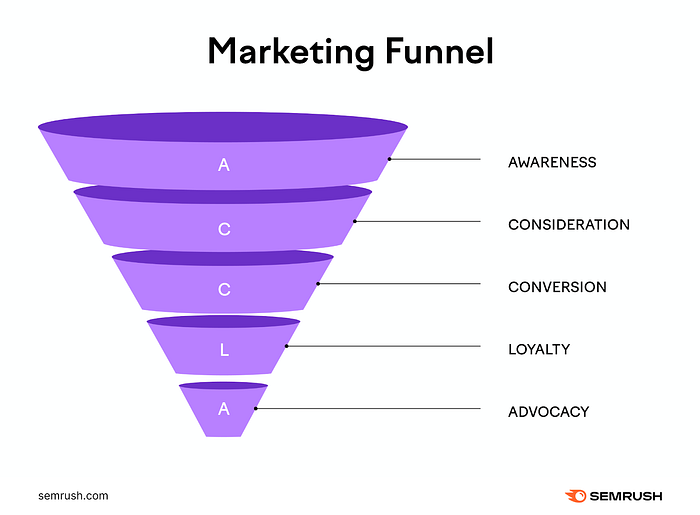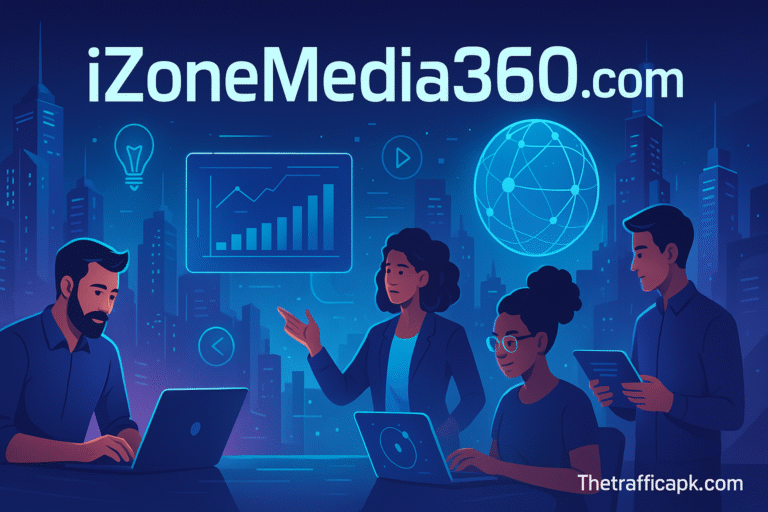Upper Funnel vs Lower Funnel: Key Differences and Marketing Tactics

In the realm of digital marketing, understanding the customer journey through the lens of the marketing funnel is essential for driving engagement and conversions. The funnel is divided into distinct stages, with the upper funnel and lower funnel representing critical phases in guiding prospects from awareness to action. Each phase demands unique strategies tailored to the buyer’s mindset and objectives. This article explores the key differences between upper and lower funnel marketing, outlines effective tactics for each, and highlights how businesses can align their efforts to create a seamless customer journey that maximizes results.
Defining the Marketing Funnel
The marketing funnel is a model that visualizes the customer’s path from initial awareness of a brand to the final purchase decision and beyond. It typically consists of three broad stages: upper funnel (awareness), middle funnel (consideration), and lower funnel (conversion). The upper funnel focuses on capturing attention and building brand recognition, while the lower funnel targets prospects ready to make a decision. Understanding these distinctions allows marketers to deploy targeted tactics that align with the buyer’s intent at each stage.
Upper Funnel: Building Awareness and Interest
The upper funnel, often referred to as the top-of-funnel (TOFU), is where potential customers first encounter a brand. At this stage, prospects may not even realize they have a need or problem, let alone be ready to purchase. The primary goal is to generate awareness, educate audiences, and spark interest, casting a wide net to attract as many relevant leads as possible.
Characteristics of Upper Funnel
- Audience Mindset: Prospects are curious, exploring, or unaware of their needs. They’re not actively seeking a solution but are open to discovering new brands or ideas.
- Goals: Increase brand visibility, educate audiences, and build trust. Metrics like reach, impressions, and engagement (e.g., likes, shares, views) are key indicators of success.
- Touchpoints: Social media platforms, blog posts, display ads, video content, podcasts, and search engine marketing often dominate this stage.
Effective Upper Funnel Tactics
To engage prospects effectively, upper funnel tactics should prioritize accessibility, engagement, and value without pushing for immediate sales.
- Content Marketing: Create educational, entertaining, or inspirational content that resonates with your target audience. Blog posts, infographics, or how-to guides addressing common pain points can position your brand as a thought leader. For example, a fitness brand might publish a blog on “10 Beginner Tips for Staying Active” to attract health-conscious readers.
- Social Media Campaigns: Leverage platforms like Instagram, TikTok, or LinkedIn to share visually compelling content, such as short videos or carousel posts. Organic and paid social ads can amplify reach, targeting broad demographics or interests. A tech company, for instance, might run a LinkedIn campaign showcasing industry trends to attract B2B prospects.
- Display and Video Ads: Use banner ads or YouTube pre-roll ads to introduce your brand to new audiences. These should be visually striking and concise, focusing on brand identity rather than product specifics. A travel agency could use vibrant video ads highlighting dream destinations to spark wanderlust.
- SEO and Paid Search: Optimize content for broad, high-volume keywords to capture organic traffic from curious searchers. Paid search campaigns targeting informational queries (e.g., “what is cloud computing”) can drive traffic to educational landing pages, building awareness.
- Influencer Partnerships: Collaborate with influencers whose followers align with your target audience. Their authentic endorsements can introduce your brand to new communities, fostering trust early in the journey.
These tactics aim to create a positive first impression, encouraging prospects to explore further without overwhelming them with sales pressure.
Lower Funnel: Driving Conversions and Action
The lower funnel, or bottom-of-funnel (BOFU), targets prospects who are ready to make a decision. These individuals have moved through the awareness and consideration stages, often having researched options and narrowed their choices. The goal is to convert these high-intent prospects into customers by addressing their final hesitations and facilitating action.
Characteristics of Lower Funnel
- Audience Mindset: Prospects are decision-oriented, seeking reassurance, value, or incentives to commit. They may compare pricing, features, or reviews before acting.
- Goals: Drive conversions, such as purchases, sign-ups, or bookings. Metrics like conversion rates, cost per acquisition (CPA), and return on ad spend (ROAS) are critical.
- Touchpoints: Product pages, checkout processes, retargeting ads, email campaigns, and customer support interactions dominate this stage.
Effective Lower Funnel Tactics
Lower funnel tactics should focus on clarity, urgency, and trust to nudge prospects toward conversion.
- Retargeting Ads: Use pixel-based retargeting to re-engage users who visited your website but didn’t convert. Ads showcasing viewed products or offering discounts can remind prospects of their interest. For example, an e-commerce store might retarget cart abandoners with a 10% off coupon.
- Email Nurturing Campaigns: Send personalized emails to prospects who’ve shown intent, such as downloading a whitepaper or signing up for a newsletter. Emails with clear calls-to-action (CTAs), like “Claim Your Free Trial” or “Shop Now,” can drive conversions. A SaaS company might send a case study highlighting ROI to push a lead toward purchase.
- Product-Focused Content: Optimize product pages with detailed descriptions, high-quality images, and customer reviews to address buyer concerns. Trust signals like money-back guarantees or security badges reduce friction. A software provider could include a demo video or ROI calculator to showcase value.
- Limited-Time Offers: Create urgency with time-sensitive promotions, such as flash sales or expiring discounts. Phrases like “Offer Ends Tonight” or “Only 5 Left in Stock” can motivate action. A retailer might use countdown timers in emails to drive immediate purchases.
- Live Chat and Support: Offer real-time assistance via chatbots or live agents to resolve last-minute questions. For instance, a travel booking site could use a chatbot to clarify cancellation policies, reassuring hesitant buyers.
These tactics are designed to capitalize on high intent, removing barriers and providing the final push needed for conversion.
Key Differences Between Upper and Lower Funnel
Understanding the distinctions between upper and lower funnel marketing ensures resources are allocated effectively. The primary differences lie in audience intent, goals, and messaging:
- Intent: Upper funnel prospects are exploring with low purchase intent, while lower funnel prospects are decision-ready with high intent.
- Goals: Upper funnel focuses on reach and engagement, measured by impressions or clicks. Lower funnel prioritizes conversions, tracked through sales or sign-ups.
- Messaging: Upper funnel messaging is broad, educational, and brand-focused (e.g., “Discover Our Innovative Solutions”). Lower funnel messaging is specific, action-oriented, and value-driven (e.g., “Get 20% Off Your First Order Today”).
- Channels: Upper funnel leans on broad-reach channels like social media or display ads. Lower funnel utilizes targeted channels like email, retargeting, or product pages.
- Timeframe: Upper funnel efforts build long-term awareness, while lower funnel tactics drive immediate results.
These differences necessitate a balanced approach, where upper funnel efforts feed the pipeline and lower funnel tactics close the deal.
Integrating Upper and Lower Funnel Strategies
While upper and lower funnel marketing serve distinct purposes, they are most effective when integrated into a cohesive strategy. A seamless funnel ensures prospects move smoothly from awareness to conversion without feeling disconnected or pressured.
- Data-Driven Alignment: Use analytics to track how upper funnel campaigns feed into lower funnel conversions. For example, monitor which blog posts drive traffic to product pages or which social ads lead to email sign-ups. Tools like Google Analytics or CRM platforms can connect these dots.
- Consistent Messaging: Maintain brand consistency across stages to build trust. An upper funnel ad highlighting your brand’s values should align with lower funnel emails emphasizing product benefits. A skincare brand, for instance, might focus on “clean ingredients” in both awareness videos and purchase-driven emails.
- Retargeting Bridges: Retargeting serves as a bridge between stages, re-engaging upper funnel prospects with lower funnel offers. A user who viewed a blog post about fitness tips could be retargeted with an ad for a discounted gym membership.
- Personalization Across Stages: Leverage data to personalize experiences throughout the funnel. Upper funnel content can target broad interests, while lower funnel offers can reflect specific behaviors, like items left in a cart.
This integrated approach maximizes efficiency, ensuring upper funnel efforts build a robust pipeline and lower funnel tactics convert qualified leads.
Leveraging Technology for Funnel Success
Technology plays a pivotal role in optimizing both upper and lower funnel marketing. Artificial intelligence (AI) and machine learning enhance targeting and personalization, predicting which prospects are most likely to engage or convert. For example, AI can analyze social media interactions to refine upper funnel ad audiences or recommend products for lower funnel emails.
Marketing automation platforms streamline workflows, delivering timely content across stages. Tools like HubSpot or Marketo can trigger welcome emails for upper funnel leads or cart abandonment reminders for lower funnel prospects. Real-time analytics provide insights into campaign performance, enabling agile adjustments to improve reach or conversions.
Addressing Common Challenges
Upper funnel marketing can struggle with attribution, as awareness efforts are harder to tie directly to conversions. Using multi-touch attribution models can help quantify their impact. Lower funnel marketing faces challenges like ad fatigue or cart abandonment, which can be mitigated with fresh creative and streamlined user experiences.
Both stages require balancing scale and precision. Upper funnel campaigns risk being too broad, missing niche audiences, while lower funnel efforts can become overly aggressive, alienating prospects. Regular testing and audience segmentation address these issues, ensuring campaigns remain relevant and effective.
Crafting a Cohesive Funnel Strategy
Upper and lower funnel marketing are two sides of the same coin, working together to guide prospects through the customer journey. By leveraging broad, engaging tactics in the upper funnel and targeted, action-driven strategies in the lower funnel, businesses can create a seamless experience that drives conversions. Integrating data, technology, and consistent messaging ensures these efforts are aligned, maximizing impact. In a digital landscape where attention is fleeting and competition fierce, mastering the interplay between upper and lower funnel marketing is the key to turning prospects into loyal customers.






